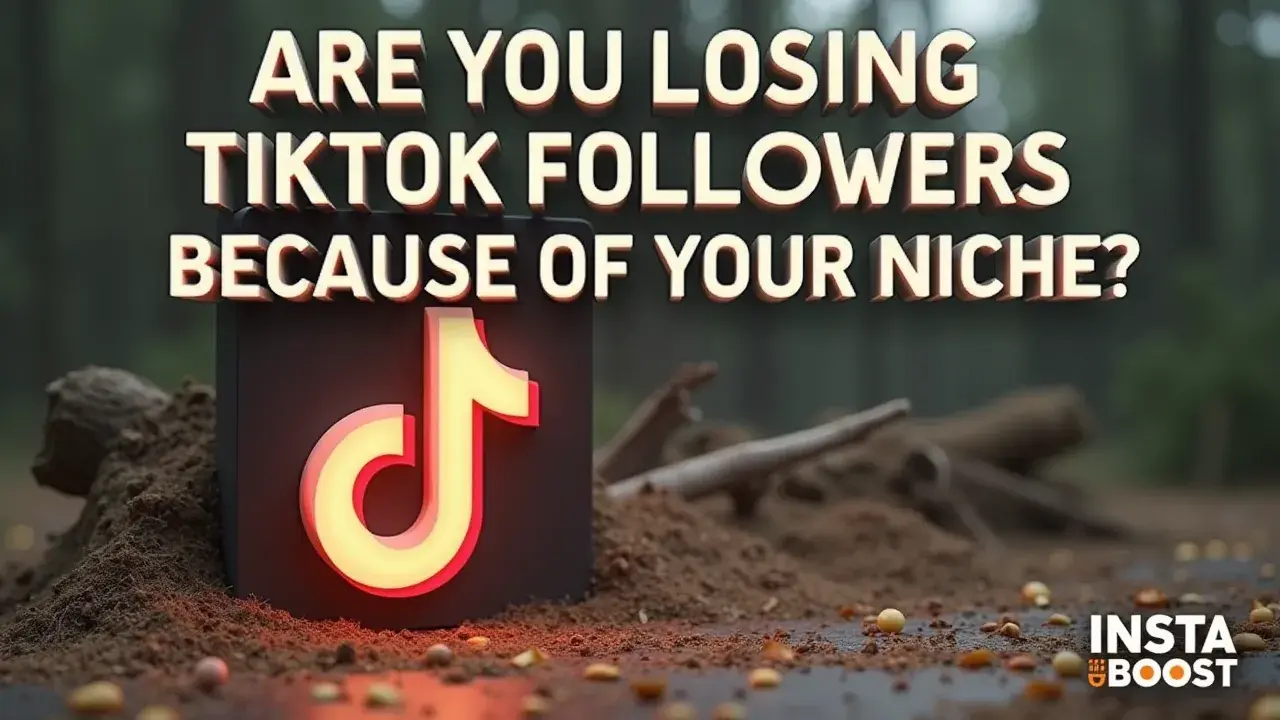Are You Losing TikTok Followers Because of Your Niche?
Audience shifts often reflect content – audience mismatch more than an inherently bad niche. Followers can drop when expectations change, subtopics stray too far, or posting cadence disrupts established themes. Clarify the niche boundaries, test adjacent angles, and track which formats, hooks, and topics retain or attract viewers. Adapting within clear parameters helps preserve identity while meeting evolving interests, making it easier to stabilize growth and focus on content that fits.
The Niche Dilemma: Blaming Content Categories for Follower Loss
When you start losing TikTok followers, it can feel pretty discouraging, especially if you’ve spent a lot of time building up a certain corner of the app. It’s natural to wonder if your niche is the problem, or if you’ve focused too tightly or too loosely. But, usually it’s not that simple.
The way TikTok works isn’t all about following the biggest trend or picking the “right” topic. The algorithm often favors people who try new things, even if their content is pretty specific. So sticking to a niche doesn’t have to hold you back, as long as you’re willing to pay attention to how things are changing on the platform. A drop in followers isn’t always about what you’re talking about – it can be about how you’re talking about it, how often you post, or whether your videos feel fresh and easy to share. Sometimes, you might be doing the same thing for a while, and people’s interests just shift without much warning.
Or you might realize the way you’re interacting with your audience has gotten a bit routine. All this can make a bigger difference than the actual subject of your videos. So instead of worrying right away that your niche is the issue, it’s worth asking if you’re staying tuned in to what’s working now, or if you’ve settled into old patterns while TikTok keeps moving. There are even entire discussions about the less obvious tools and strategies people use in the background, like a full suite of TikTok boosters, and how those might quietly affect engagement.
This article is meant to look at some of the less obvious reasons why followers drift away – like how the algorithm treats different habits, why trends get old, and how sharing actually happens – since those are the things we usually don’t think about first when our numbers start to drop. Before you feel like you need to scrap what you’ve built or pick a totally new direction, it’s good to sit with these questions and see what’s really pulling the strings underneath.
This article is meant to look at some of the less obvious reasons why followers drift away – like how the algorithm treats different habits, why trends get old, and how sharing actually happens – since those are the things we usually don’t think about first when our numbers start to drop. Before you feel like you need to scrap what you’ve built or pick a totally new direction, it’s good to sit with these questions and see what’s really pulling the strings underneath.

Why Consistency Quietly Builds Trust
From what I’ve seen, steady effort matters a lot more than jumping on every new trend. When someone starts losing followers on TikTok, it’s easy to think the problem is with the niche, but that’s usually only part of the picture. What actually moves the needle is showing up and offering something people actually find useful or interesting, which isn’t always easy when the app feels like it’s all about quick trends or big, viral moments. Even though TikTok’s algorithm can seem all over the place, it tends to reward people who post regularly and build some kind of trust with their audience.
That means sticking with topics your followers know you for, even if your views go up and down. The people who get through dips in their numbers usually don’t throw out everything they’ve built whenever they see a drop. They keep their focus, even when it’s tempting to switch things up completely because something isn’t working right away. Over time, that kind of steady approach turns into something people recognize and want to stick around for. Looking at accounts that have stayed consistent – whether it’s someone posting makeup tips or someone explaining old news stories – the thing that connects them isn’t that they picked the perfect topic, but that they’ve found a way to show up in a familiar way.
INSTABOOST’s data backs this up, too – accounts that keep a steady posting routine tend to hang on to followers, even in really specific corners of TikTok, and in some cases, a few have experimented with follower packages for TikTok to see if it helps during slow periods. So before you feel like you have to overhaul everything, it’s worth thinking about whether you’re actually offering people something they can come back to, even if it isn’t flashy every time. Sometimes, that’s enough.
Turn Your Process Into a System, Not Just a Plan
A lot of people like to think that having a plan is what matters, but it’s usually the system behind the plan that actually gets things done. For example, if you’re trying to keep people interested in what you post on TikTok, it’s less about your niche and more about whether you’re following a routine or actually building a process you can rely on. Sticking to a schedule – posting three times a week, using the latest sound, adding new hashtags – might look good on paper.
But a system is more about habits, and paying attention to what actually works. Say you notice that certain videos are being shared more, not just liked. That’s the sort of detail you’d start tracking, so you can make small adjustments instead of repeating the same thing over and over. It’s pretty common for creators to get frustrated when numbers drop, and they’ll point to their niche as the reason, but often it comes down to always reacting instead of looking for patterns and staying curious.
TikTok’s algorithm doesn’t care much about your plans; it responds to people who notice things like watch time or saves, and are willing to let that shape what they try next. The creators who seem to grow steadily are usually the ones treating every post as a way to learn something new. And sometimes, even when people talk about TikTok content like boost, it really circles back to building habits out of little experiments, so you’re not spinning your wheels or hoping something will eventually stick. Most of the time, losing followers isn’t really about the topic you picked; it’s more about how you approach the process, whether you’re setting things up to learn and adjust, or staying stuck in the same loop. Over time, when you keep at it and tweak your system as you go, you start to notice that growth doesn’t have to feel so out of your hands.
When “Trying Everything” Isn’t the Fix
It’s easy to wonder if you’re doing something wrong when your follower count starts to slip – I’ve felt that too. Our first instinct is often to blame the kind of stuff we’re posting or think maybe our TikTok niche isn’t interesting enough anymore. So, we start changing things up: adding trending sounds, chasing every new challenge, trying out different styles. I’ve seen people bounce from posting dance clips one week to cooking tips the next, hoping one of them will stick.
But sometimes, the drop in followers isn’t about being out of touch. People’s feeds get crowded, and when what you’re sharing keeps changing, it gets confusing for them. They want to know what to expect, and if every video feels like it’s trying to catch their attention in a totally new way, it can come across as scattered or even uncertain. That steady, recognizable style – like when you see a favorite creator’s video and immediately know it’s theirs, even before you check the username – is what keeps people coming back. The big accounts lose followers too, but most of them don’t overhaul everything the minute numbers dip.
They keep showing up in ways that feel true to them and let things shift over time, not all at once because of a bad week. I remember reading somewhere that even things like fast delivery TikTok views can give a short-term boost, but it’s the underlying consistency that builds real loyalty. So before worrying about whether you picked the wrong topic, it might be worth asking if you’re making it easy for people to know what you’re about. Consistency in the kind of things you share, the way you talk, or even the little details like how you open your videos – that’s what helps people feel like they can trust you, whether you’re running a huge brand like INSTABOOST or you’re posting from your kitchen table.
Shareability: The Real Niche Multiplier
It’s easy to put your videos aside when they don’t seem to fit, but there’s value in looking at what you’ve made and thinking about how it could be used in a new way. On TikTok, sharing is what really gives your posts a life beyond your own feed. If you’re worried that posting outside your usual topic will cost you followers, or if you feel boxed in by your niche, try to take a step back and look at how shareable your videos actually are. Most of the time, people pass things on because they got something out of it – a tip that saves them time, a punchline that catches them off guard, or a moment that makes them think of someone else.
Rather than sticking strictly to one style or switching things up every time your numbers drop, it helps to ask yourself if you’ve made it easy for someone to share your video, or to show it to a friend. That’s often where the most genuine interest comes from. Sometimes, just tweaking your approach can quietly boost your TikTok repost count in ways that feel organic. Thinking about shareability isn’t about narrowing or expanding your topic, but about making something people want to respond to or pass along in some way.
When your video gets shared, it finds new people and brings in fresh interest – usually more than you’d get by constantly rebranding. Pay attention to the formats and hooks you see working around you – the ones that invite people to stitch, duet, or add their own twist. That’s where TikTok really shines, and it’s why certain creators keep growing even if they don’t always stick to one thing. If you want your followers to stick around, it’s worth focusing on what makes someone want to pass your videos along, not only on what fits your niche. There’s something steady about that approach, and I’ve seen it turn casual accounts into favorites that last.















